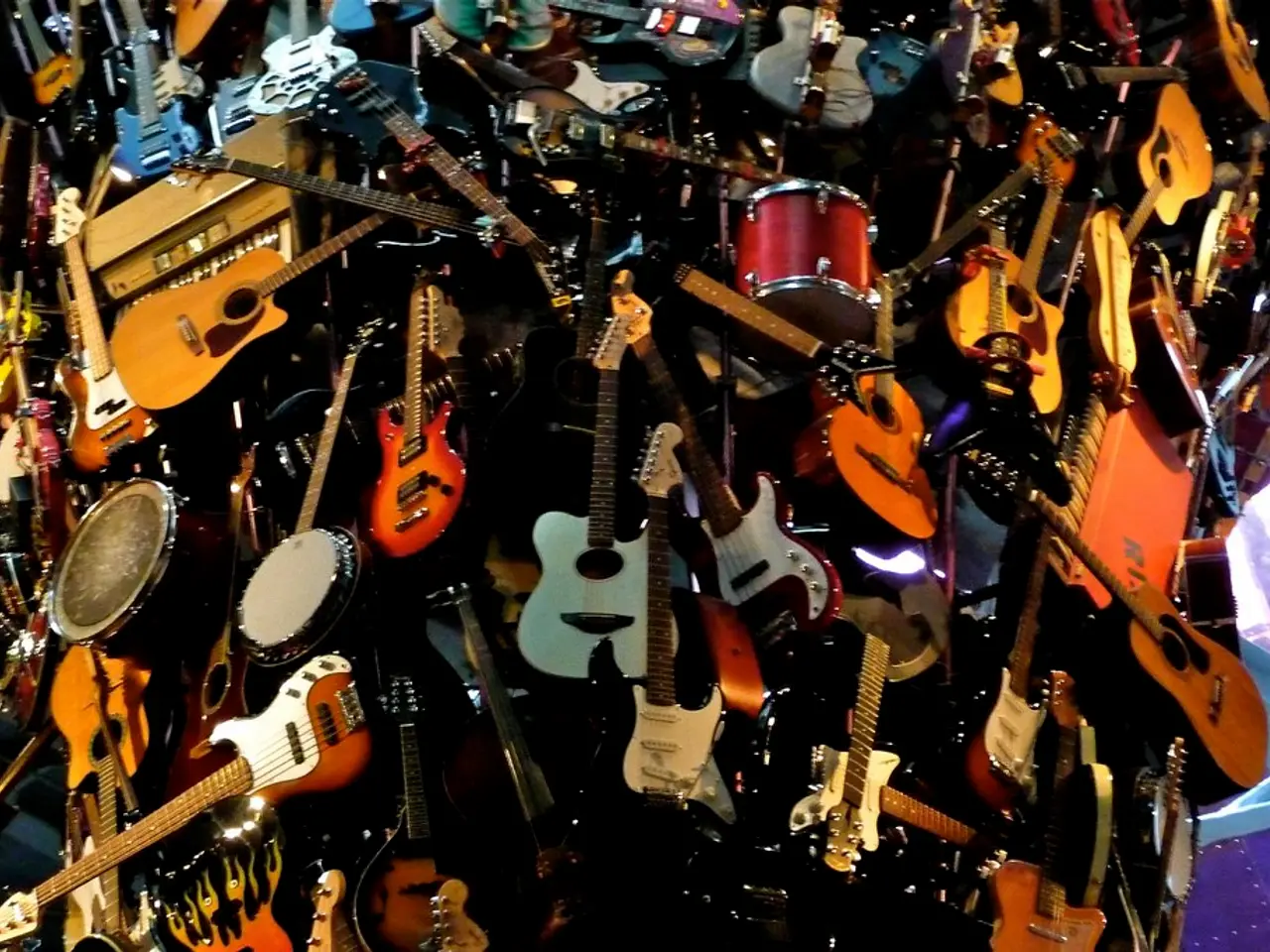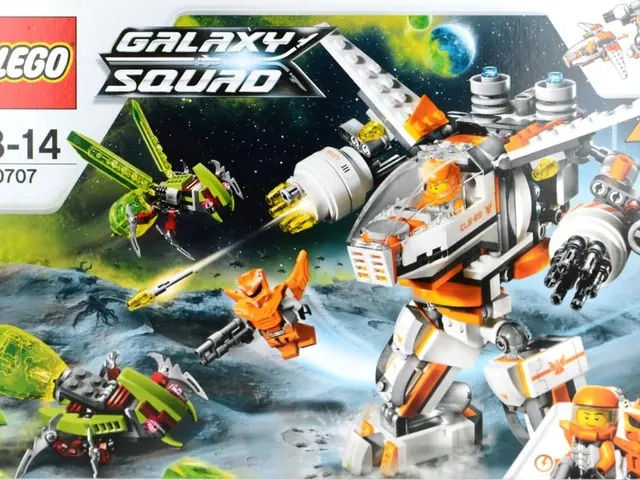AI-powered music creation process
In the ever-evolving world of music, artificial intelligence (AI) is making a significant impact, transforming the way we create, compose, and experience music.
At the heart of this revolution are generative AI music systems, which use advanced machine learning models to learn from vast datasets of existing music. These models, such as deep neural networks, transformers, diffusion models, and generative adversarial networks (GANs), capture the intricate patterns, structures, and styles that define music.
The key components of these systems include deep learning models, tokenization and language modeling, training on large music datasets, diffusion models and spectrogram analysis, user input interfaces, and feedback and refinement.
Music is broken down into sequences of tokens (notes, chords, rhythms), enabling models to learn the grammar of music much like natural language processing models. Millions of songs, MIDI scores, or orchestral data are used to teach AI systems musical theory, genre characteristics, and emotional tonality. Some systems even use diffusion techniques on visual representations of sound (spectrograms) to generate riffs or melodic elements.
Text-to-music interfaces allow users to input descriptive prompts, such as "jazzy lo-fi with chill vibes", which the AI interprets to create matching compositions. Advanced models also incorporate feedback loops from human user interaction to fine-tune output quality and expressiveness.
Meanwhile, voice AI is playing a pivotal role in the music industry. Voice cloning tools are being used for vocal demos, background harmonies, multilingual versions of songs, and even full vocal tracks in AI-composed music. These systems can mimic accents, emotions, or even age the voice up or down based on the input provided. Voice AI models are trained on vast datasets that capture thousands of speakers across diverse contexts, learning to separate linguistic content from the voice's unique identity.
Voice cloning models like Voicebox, VALL-E, and ElevenLabs' Prime Voice AI can replicate someone's voice using only a few seconds of reference audio. More advanced voice cloning systems support zero-shot or few-shot generation, meaning they don't need hours of training data per person.
Neural codecs, such as SoundStream, are the unsung heroes of generative AI in music. They compress audio into a discrete, lower-dimensional format while preserving enough information to reconstruct it convincingly. SoundStream operates through an encoder-quantizer-decoder pipeline, optimized through end-to-end training to learn how to preserve relevant musical features while removing redundancy.
The future of AI in music is a subject of ongoing debate. While concerns about the emotional connection people might have with songs written by machines and the potential for AI-generated music to flood digital platforms are valid, AI is increasingly being seen as a new kind of "instrument" rather than a threat to originality.
AI is already being used by Grammy-winning producers for ideation, arrangement, and polishing mixes in the music industry. Voice AI is also used in AI companions, such as Candy AI and Kindroid, for their life-like voice features that feel personal.
In conclusion, the rise of generative AI and voice cloning is revolutionizing the music industry, opening up new creative possibilities for musicians and non-experts alike. As these technologies continue to evolve, we can expect to see even more innovative applications in the future.
Generative AI music systems, like deep neural networks, transformers, diffusion models, and generative adversarial networks (GANs), significantly impact the music industry by learning from vast datasets and transforming the way music is created and composed.
Voice AI models, such as Voicebox, VALL-E, and ElevenLabs' Prime Voice AI, play a pivotal role in music production by mimicking voices and creating vocal tracks based on a few seconds of reference audio, revolutionizing the music industry with their innovative capabilities.




